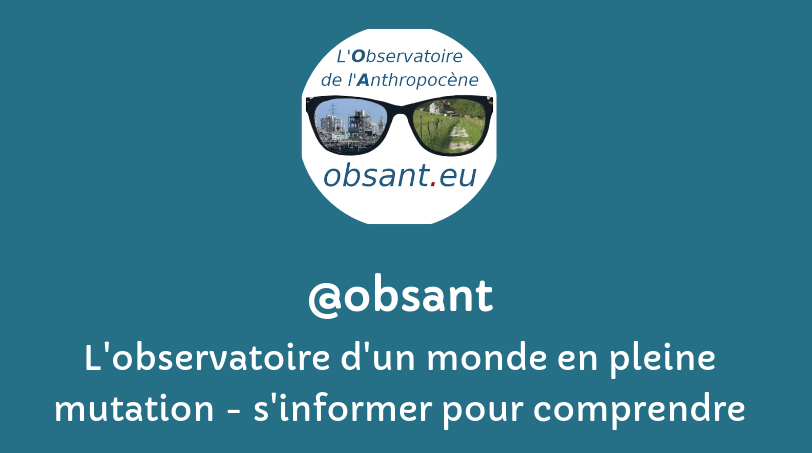Les champs auteur(e)s & mots-clés sont cliquables. Pour revenir à la page, utilisez le bouton refresh ci-dessous.
The 511 billion barrels reported is nearly double Saudi Arabia’s proven reserves and more than ten times the North Sea’s output over the last 50 years.
The Atlantic meridional overturning circulation (AMOC) is an important tipping element in the climate system. There is a large uncertainty whether the AMOC will start to collapse during the century under future climate change, as this requires long climate model simulations which are not always available. Here, we analyze targeted climate model simulations done with the Community Earth System Model (CESM) with the aim to develop a physics-based indicator for the onset of an AMOC tipping event. This indicator is diagnosed from the surface buoyancy fluxes over the North Atlantic Ocean and is performing successfully under quasi-equilibrium freshwater forcing, freshwater pulse forcing, climate change scenarios, and for different climate models. An analysis consisting of 25 different climate models shows that the AMOC could begin to collapse by 2063 (from 2026 to 2095, to percentiles) under an intermediate emission scenario (SSP2-4.5), or by 2055 (from 2023 to 2076, to percentiles) under a high-end emission scenar
Scientists say ‘shocking’ discovery shows rapid cuts in carbon emissions are needed to avoid catastrophic fallout
Gains in cutting deaths from tuberculosis at risk as health officials warn clinics forced to ration drugs and testing
Suspension of Soy moratorium could open up area of rainforest the size of Portugal to destruction
New research catalogs several “abrupt changes,” like a precipitous loss of sea ice, unfolding in Antarctica with dire implications for us all.
This article examines the technocentric bias that characterizes climate mitigation literature, focusing on the reports of the IPCC's Working Group III. This bias stems from structural features of the scientific field that prioritizes innovation, leading to the overrepresentation of technological solutions in climate research. Funding mechanisms further reinforce this tendency by incentivizing collaboration with industrial R&D, creating a self-reinforcing loop in which scientific authority and industrial interests converge. The IPCC's institutional positioning—as a policy-relevant yet politically cautious body—amplifies this dynamic by favoring allegedly “cost-effective” technological pathways that lack practical feasibility.
A common pesticide can increase children’s risk of poor brain development and motor skills Kids exposed to chlorpyrifos while in the womb have altered neuron development and lower blood flow to their brains This can cause problems with motor skills among children
The long read: Churning quantities of carbon dioxide into the atmosphere at the rate we are going could lead the planet to another Great Dying
Some experts tee up public comment on EPA report calling fossil fuel concerns overblown, as others fast-track review
Almost 100 countries reject draft treaty as ‘unambitious’ and ‘inadequate’
Those who destroy the living world should be charged with the international crime of ecocide
As corporate interest in ocean carbon removal grows, researchers from Woods Hole Oceanographic Institution are testing the safety and effectiveness of one such technique in the Gulf of Maine.
Record heat, massive fires, deadly floods... August has barely begun, but the summer of 2025 is already marked by a cascade of destructive and deadly weather in the Northern Hemisphere.
Nonylphenol is a toxic xenobiotic compound classified as an endocrine disrupter capable of interfering with the hormonal system of numerous organisms. It originates principally from the degradation of nonylphenol ethoxylates which are widely used as industrial surfactants. Nonylphenol ethoxylates reach sewage treatment works in substantial quantities where they biodegrade into several by-products including nonylphenol. Due to its physical–chemical characteristics, such as low solubility and high hydrophobicity, nonylphenol accumulates in environmental compartments that are characterised by high organic content, typically sewage sludge and river sediments, where it persists.
A decade ago several prominent climate scientists discussed the prospects of a 4C Earth. Their concern was qualified “… if greenhouse gases do not slow down, then expect a 4C Earth by 2055.” Of course, that would be catastrophic, and one can only assume those scientists must have recognized real risks. Otherwise, why address the issue of 4C by 2055 in the first instance?
The unspoken truth about humanity's frightening future.
The author of Empire of AI: Inside the Reckless Race for Total Domination discusses the cost of Big Tech’s huge investment in technologies that may do more harm than good
The report, which is being used to justify the rollback of a huge number of climate regulations, is full of misinformation—with many claims based on long-debunked research. The report, which is being used to justify the rollback of a huge number of climate regulations, is full of misinformation—with many claims based on long-debunked research.
The world is losing fresh water at an unprecedented rate, two decades' worth of satellite data has revealed. Measurements from NASA's twin GRACE satellites and GRACE follow-on missions have shown that since 2002, the amount of land suffering from water loss has been increasing year on year by twice the area of the state of California. That includes the loss of water from surface reservoirs such as lakes and rivers and underground aquifers, which are an important source of drinking water around the globe.
![]()



